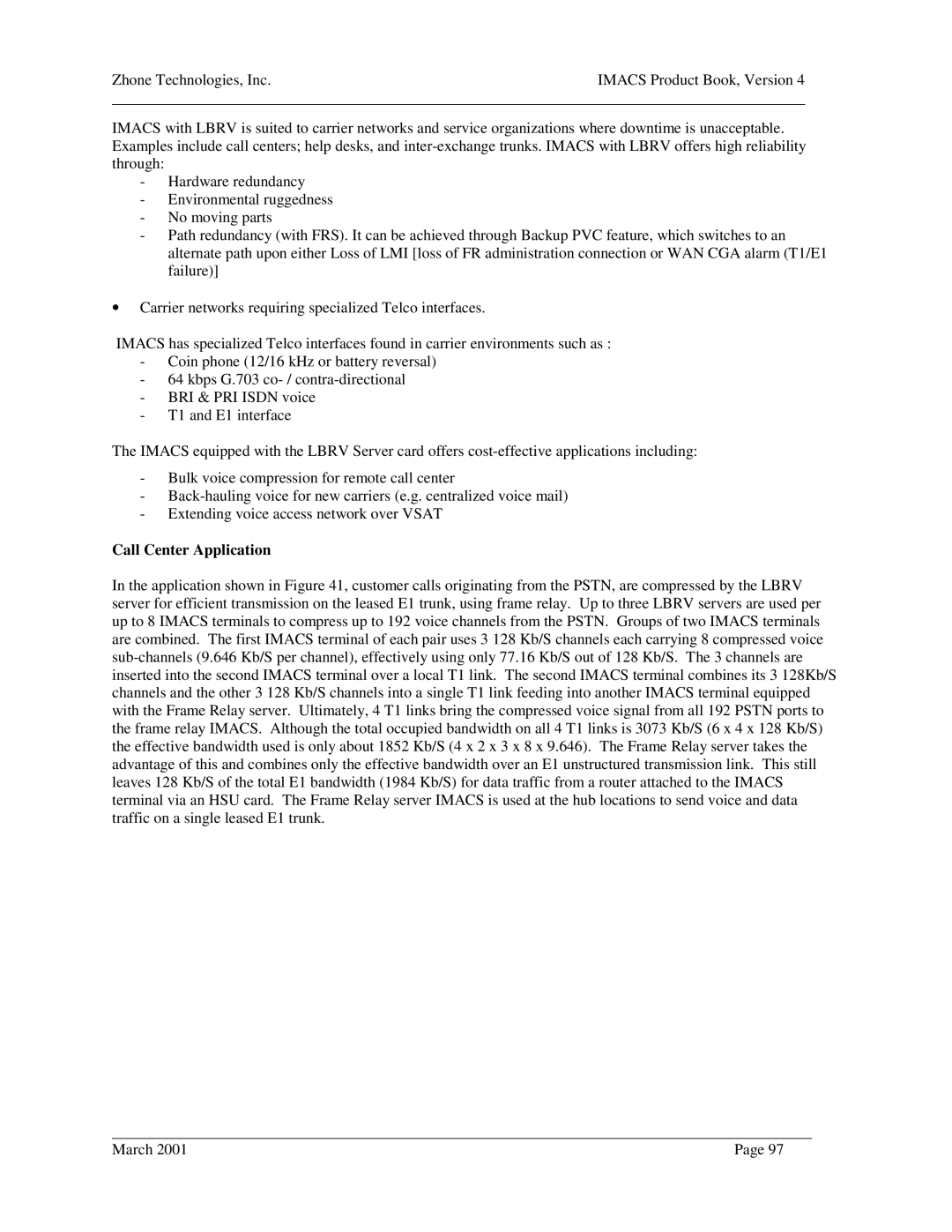Zhone Technologies, Inc. | IMACS Product Book, Version 4 |
IMACS with LBRV is suited to carrier networks and service organizations where downtime is unacceptable. Examples include call centers; help desks, and
-Hardware redundancy
-Environmental ruggedness
-No moving parts
-Path redundancy (with FRS). It can be achieved through Backup PVC feature, which switches to an alternate path upon either Loss of LMI [loss of FR administration connection or WAN CGA alarm (T1/E1 failure)]
•Carrier networks requiring specialized Telco interfaces.
IMACS has specialized Telco interfaces found in carrier environments such as :
-Coin phone (12/16 kHz or battery reversal)
-64 kbps G.703
-BRI & PRI ISDN voice
-T1 and E1 interface
The IMACS equipped with the LBRV Server card offers
-Bulk voice compression for remote call center
-
-Extending voice access network over VSAT
Call Center Application
In the application shown in Figure 41, customer calls originating from the PSTN, are compressed by the LBRV server for efficient transmission on the leased E1 trunk, using frame relay. Up to three LBRV servers are used per up to 8 IMACS terminals to compress up to 192 voice channels from the PSTN. Groups of two IMACS terminals are combined. The first IMACS terminal of each pair uses 3 128 Kb/S channels each carrying 8 compressed voice
March 2001 | Page 97 |
